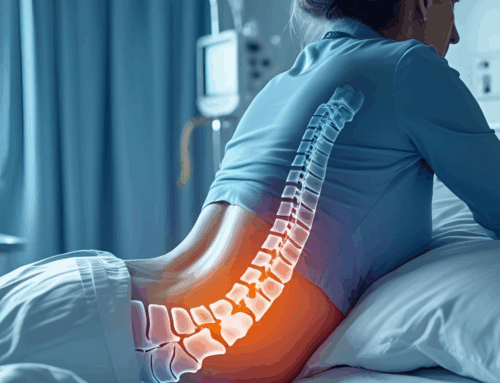In today’s world of desk jobs, binge-watching, and remote work, sitting has become the default posture for many adults. While it may seem harmless, prolonged sitting can silently wreak havoc on your spine. The human body simply wasn’t built to remain seated for hours on end. Fortunately, small, consistent changes in your daily routine—particularly choosing to stand more and sit less—can significantly reduce spinal stress and promote long-term back health.
The Hidden Toll of Prolonged Sitting
Sitting for extended periods puts considerable pressure on your lower back. In fact, studies show that lumbar disc pressure is significantly higher when sitting compared to standing. Over time, this stress can contribute to:
- Poor posture and spinal misalignment
- Weakening of core and glute muscles
- Reduced flexibility in the hips and hamstrings
- Increased risk of chronic back pain and spinal disc issues
Sedentary behavior is also linked to decreased circulation, weight gain, and increased inflammation—all of which further compromise spine health.
Understanding Spinal Stress
Your spine is designed to support your body through a wide range of motion, not static, repetitive postures. When you sit for hours:
- The intervertebral discs are compressed disproportionately.
- The hip flexors shorten, pulling your pelvis out of alignment and creating tension in the lower back.
- The core muscles that support your spine remain inactive, weakening over time.
This combination of inactivity, compression, and muscular imbalance accelerates spinal wear and tear.
Why Standing More Helps
Standing naturally activates your postural muscles, engages your core, and helps distribute your body weight more evenly. Even brief periods of standing throughout the day can:
- Relieve pressure on the lumbar discs
- Improve circulation to spinal tissues
- Encourage natural spinal curvature
- Increase alertness and energy
Research has found that alternating between sitting and standing every 30 to 60 minutes can dramatically reduce back discomfort and fatigue.
Simple Strategies to Stand More and Sit Less
You don’t have to overhaul your entire lifestyle to protect your spine. Here are practical, low-effort ways to incorporate more standing into your day:
1. Use a Sit-Stand Desk
Investing in a height-adjustable desk allows you to alternate between sitting and standing with ease. Start by standing for 15-30 minutes every hour and gradually increase as your body adapts.
2. Stand During Phone Calls or Meetings
If you’re on a call or attending a virtual meeting, take the opportunity to stand. Walking in place or lightly pacing can keep your spine active and engaged.
3. Take Frequent Breaks
Set a timer every 30-45 minutes to get up, stretch, and move around. Even standing up for a minute or two makes a difference.
4. Active Commuting and Errands
Walk or bike to nearby locations when possible. Park farther from store entrances or take the stairs instead of the elevator.
5. Use a Countertop for Quick Tasks
Tasks like checking your email, folding laundry, or preparing lunch can easily be done while standing.
6. Stretch It Out
Incorporate gentle spine and hip stretches throughout the day. Movements like spinal twists, forward folds, or standing backbends help reset your posture.
Tips for Standing Safely and Comfortably
While standing has clear benefits, it’s important to do it mindfully to avoid replacing one problem with another.
- Use a footrest to alternate your weight between feet and reduce lower back strain.
- Wear supportive shoes or use a cushioned mat if standing on hard floors.
- Keep your knees slightly bent, not locked.
- Align your head and shoulders over your hips—avoid leaning forward.
- Shift your weight periodically and avoid remaining static.
The Role of Movement: Not Just Standing, But Moving
It’s not just about replacing sitting with standing—it’s about incorporating more movement throughout your day. Micro-movements, posture changes, stretching, and walking all help keep your spine resilient.
What About People with Back Pain?
If you’re already dealing with chronic back pain, standing more may seem daunting—but it can still be beneficial. Start with short, supported standing sessions and consult a physical therapist or pain specialist for guidance.
Small Changes, Big Impact
Here’s a sample “Stand More” schedule:
- Morning: Stand while brushing your teeth and preparing breakfast
- Mid-morning: Take a standing break every 45 minutes
- Lunch: Walk for 10 minutes before or after eating
- Afternoon: Alternate standing and sitting every 30-60 minutes
- Evening: Do stretches while watching TV or winding down
Final Thoughts
The spine is central to everything we do—from walking and lifting to sitting and sleeping. By standing more and sitting less, you give your body the dynamic support it needs to thrive.
Start small. Stand while checking emails. Take the long way to the copier. Stretch during commercial breaks. These micro-adjustments accumulate over time to create a healthier, stronger, and less stressed spine.
Your back will thank you.







